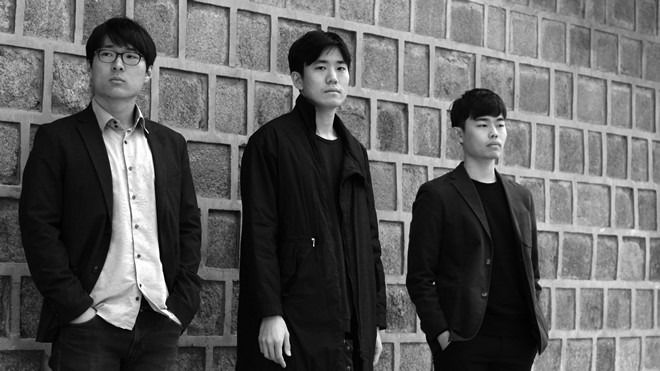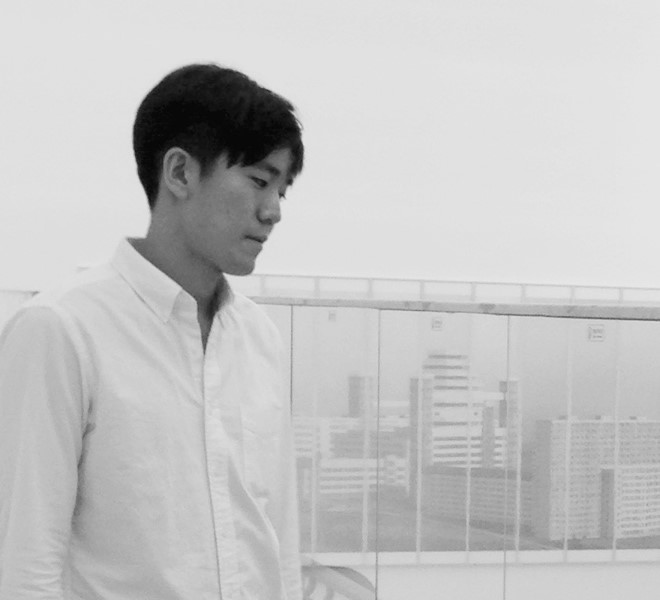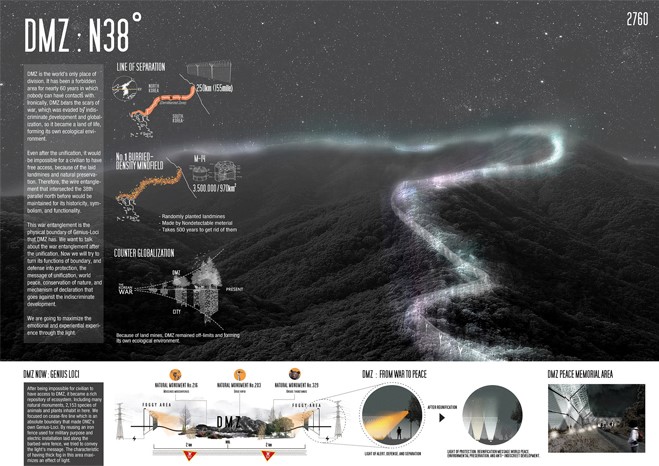Philips Clue 02 first prize winner Yeonho Lee sheds light about his winning design in an exclusive interview with Philips Social Media Manager Monique Cousineau.
What is the evocative power of a name? Just the mere mention of three letters – DMZ, brings haunting memories for millions of people around the globe. The name is also a place, “sacred” in the sense of what it represents. To conceive that this fence – illuminated – could represent the unification of two counties, is a belief worth holding. In this sense, “Lightius Loci” becomes “Hopeius Loci,” the place of hope.--Frederick Oberkircher, Jury member
Two weeks ago we announced the winners of the international lighting design CLUE 02 Competition. The theme this year was Lightius Loci – Spirit of Light.
Today we are posting our interview with the first prize winner Yeonho Lee and his team from Korea.
First, congratulations on winning the first prize for edition 02 of the CLUE Competition.
Tell me about yourself, your career and your education.
I live in Seoul, South Korea, and I’m in my 4th year of studies at Kookmin University. Our school is a renowned architectural school in the nation. I’m doing a double major in architecture and interior design. People often say I have a keen sensibility. In my childhood, I worried a lot which can been seen as fragility. This fragility has become my hidden talent and one of my strengths. Since then, I enjoy studying the emotional aspects of architecture. The CLUE Competition was the first time we participated in an international competition. My friends and I are very happy and proud to have won the first prize on our first try. On my team we have Wooseok Jang and Donggyun Ha.
 |
|
From left to right: Wooseok Jang, Yeonho Lee and Donggyun Ha. (All photos courtesy of Philips) |
Where does your interest in lighting design come from?
In Korea, architecture and interior design are separated. They are offered as two different disciplines. I chose to study both in a double major. Since then, I always try to consider the correlation between lighting and space. In particular, professor Kwon, who studied lighting design at Parsons College in the United States, encouraged me to develop an interest in lighting. Within the framework of architecture, light can alter a space and create a completely different mood. This aspect inspired me to embrace an interest in light.
 |
|
Yeonho Lee. |
Why did you choose to participate in the lightius loci themed CLUE Competition?
I’ve been familiar with Philips products since childhood. I have table lamps and also have frequently used acoustic devices such as headsets and earphones. And I also know that Philips Lighting creates breakthrough lighting solutions. The lighting design contest sponsored by Philips had enough charm and offered an interesting challenge. Also it was a very interesting topic for us to combine the principle of genius loci with light.
Can you share with us your initial idea behind this concept of DMZ : N38 ̊and what is the interface aspect of this project?
The internal space of the Military Demarcation Line is a forbidden space. And it is the place of great implication bearing the pain of war. It is also a place of infinite possibilities. We thought about these endless possibilities. Beyond the healing of the physical dimension, we thought about the emotional side of healing, using light.
Do you think that your proposal could become a reality?
In fact, if peaceful reunification is not achieved, the proposal can never be done. The reason why we have created this project, this illuminated symbolic fence, is to share a message about desired unity. Even if unity is achieved, this place, the DMZ zone is not a place that is easily accessible. It would not be easy to implement.
What were your motivations for DMZ : N38 ̊?
Before and after submitting our project, provocations by North Korea was intensified. We were seriously worried about unity and harmony. Expressing unification with light was a really good way for us to share our message. That’s the main reason why we chose DMZ as a theme.
Please tell us more about the operational aspect of your installation. How does it work?
DMZ is a frontline, and lights for monitoring run 24 hours a day. It means electrical facilities are already equipped. Nowadays, in Korea, renewable energy is a very hot topic. Our proposal also has to adjust its key measures to connect with the existing facilities. The final goal of this proposal is to create the light filled Peace Park. Of course, for safety reasons, not all sections will be lit in the park, which is open to the public. But perhaps some sections could be lit to create a fence which would represent a symbol of world peace.
 |
|
DMZ N38 ̊ design concept. |
How do you see lighting design evolving on a long-term basis?
Recently, historic confrontation between Korea’s Lee Se-dol & AlphaGo had a tremendous impact on our society. Somebody also complained of group depression. The core of humanity that we believe in, is the ability to be sensitive and empathize. Light is the best medium to stimulate these senses and behaviors. And I think that it is the direction of lighting design. The design of the light is to stimulate sensitivity and create better designs and a better life.
How do you see your professional career evolving?
Recently I won an award in a national competition with the theme “Architecture of disaster”. Both topics, architecture and disaster are closely related to human life. After all, architecture is for all humans. Architecture begins to take its meaning when society inquires about human nature. So I plan to learn the theory of architecture as a base to support human life and emotions, and plan to practice those theories.





 CN
TW
EN
CN
TW
EN








